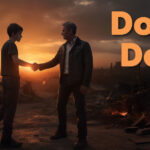 Preamble
Preamble
In a previous post, I discussed some of the concepts and examples behind the expression, “Show don’t tell.”
A picture says a thousand words — imagine how many words motion-pictures say. That’s why it’s a well-regarded rule to follow when writing your scenes.
But one should also be cautious of following rules blindly.
Adherence to the rule
A few weeks ago, I was visiting a screenwriters group in L.A. that is hosted by a local screenwriting guru. The guru, who I actually respect very much, was discussing Quentin Tarantino’s Pulp Fiction (Amazon | IMDB). He made an offhand comment about how the script made some Hollywood Company’s “Wall of Shame.”
Apparently they have some type of algorithm which plots common script problems or something, and because it broke so many rules, it received an abysmal grade. Anyway, the guru was in sync with their assessment and remarked that the scene with the watch was terrible.
Never one to worry about looking stupid, I interrupted him with a question. Here’s how our conversation went:
TREVOR
I’m sorry, what exactly is wrong with the scene with the watch? It’s one of my favorite scenes.
GURU
What happens in the scene?
TREVOR
Uhhh... Christopher Walken’s character tells the--
GURU
He does what?
TREVOR
He tells--
GURU
He what?
TREVOR
Oh, I get it. He’s breaking the “show don’t tell” rule.
Some rules can be broken
I don’t know about you, but when I encounter a scene in a movie that really works, I focus on why the scene works — not what rules, if any, it’s breaking.
The watch scene from Pulp Fiction is one such example. It may break the rule of “show don’t tell,” but I feel there are several reasons why the scene works brilliantly:
1. He’s Telling Us A Compelling Story
Humans communicate and learn via stories. Ever since Grog told the one about how he killed the mighty mammoth with his bare hands, humans have been enjoying well told tales. It’s in our DNA.
So sure, a story is by definition telling us something and not showing us the event, but it’s something we’re hardwired to be receptive to — especially when it’s delivered by a raconteur like Christopher Walken.
2. We’re experiencing the story from the protagonist’s point of view
In the watch scene, Captain Koons (Walken) talks almost directly at us (the camera). We’re meeting that character for the first time — just like the protagonist is. Tarantino does a fabulous job of putting us in the young boy’s shoes — feeling what it would be like to have this strange man come into our living room and tell us such a crazy story.
3. The story is a punchline
We get to find out why Butch (Bruce Willis) freaks out over the watch, and we learn this new information in a very humorous way. So in actuality, this scene *is* showing us the importance of the watch.
What would the alternative have been? There’s nothing Butch could have said that would have come close to the poignancy of actually experiencing that moment with Captain Koons.
4. We DEFINITELY don’t want to see what happened to the watch
Grimy men in a Hanoi pit shoving hiding a watch… Probably better left to to the imagination.
Summary
What the guru failed to realize, in my opinion, was that sometimes there’s no substitute for a well told story. In the right hands it can make us laugh, horrify/thrill us, advance the plot and develop a character.
How less powerful would Jaws (Amazon | IMDB) have been without Quint’s monologue about the ill-fated USS Indianapolis?
Or what about when Michael Corleone (Al Pacino) told Kay Adams (Diane Keaton) the story about Johnny Fontane in The Godfather (Amazon | IMDB): “My father made him an offer he couldn’t refuse.” It sets up the stakes and the world of the movie.
In another Tarantino classic, Reservoir Dogs (Amazon | IMDB), the telling of a story spanned several scenes and was used very effectively to reveal character and context.
While it’s important to follow the “show don’t tell” rule to eliminate expository scenes or on-the-nose dialogue, never lose sight of the goal — to entertain the audience. Sometimes that means knowing when to break the rules.
What’s your take? Do you have a favorite scene where a character is simply telling a story?






Great article! By far my favorite story telling moment (that I could think of anyway) is from the last Star Wars movie where Palpatine tells Anakin the story of Darth Plagueis the Wise.
I have actually put the DVD in my pc just to watch that scene!
Cheers,
D
Yes, good call! That’s definitely one of my favorites as well.
I’ve been struggling with this decision for a while now, but you’ve given me confidence to stick to my guns. One of my scripts were the protagonist is a gang leader has a scene were his first touch of the world was that of cold porcelain, because when he was born, his mother was sitting on a toilet, shooting dope, moments away from labor. A small scene just to show he was doomed at the starting gate, but I was never really comfortable about showing this. So instead, he relays this information while in prison via a VO to another inmate who reads his diary. I think what I’ve given up in shock-value by not showing this, I’ve gained more emotional involvement with the character by telling it. Thanks for the post. It really gives me the confidence to stand-by my creative decisions.
Great stuff CB. Sounds like it could be a powerful moment.
Your teacher was an idiot. The “tell” version of that scene would be Bruce Willis talking about the time his father’s fellow officer showed up at his house. That scene is “show”ing us what happened; we see the pain behind Walken’s eyes, we see Butch’s implacable reaction, there’s plenty of information in that scene beyond what is being “told” (none of which is directly important).
Well said, Sean. I wholeheartedly agree with you.
I must say though, that the “guru” is in question here is actually an intelligent guy. You know how sometimes really smart people believe really stupid things? Yeah, it’s like that. We all have one of those blind spots. Apparently this was his.